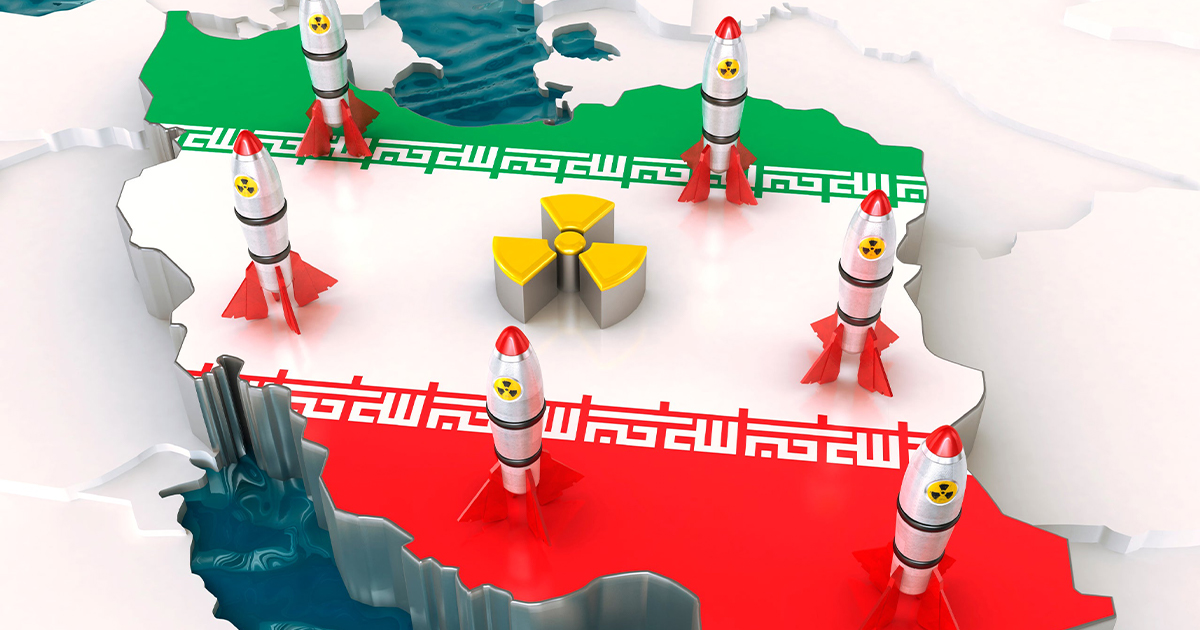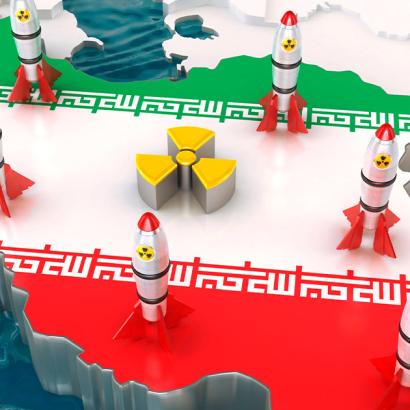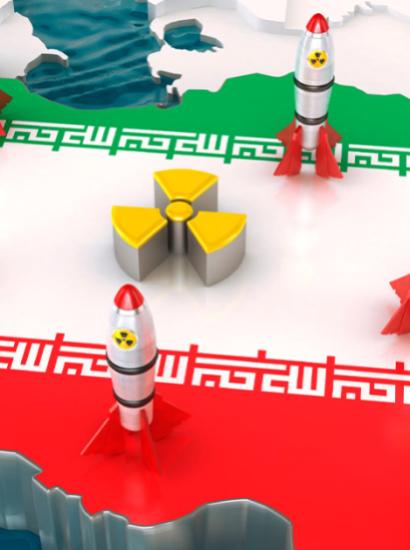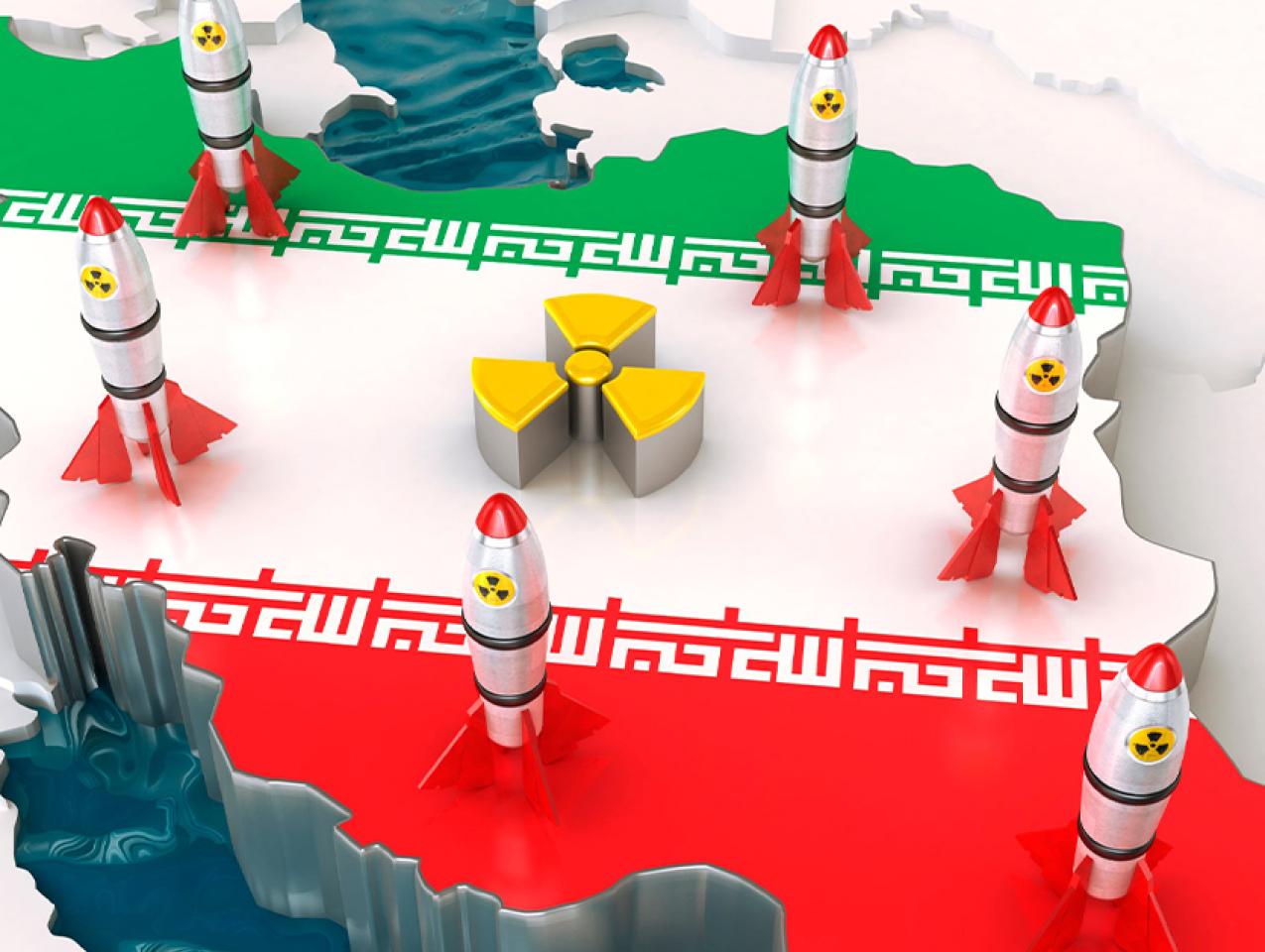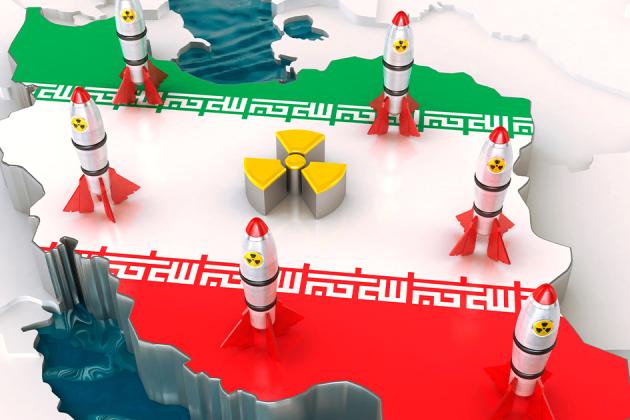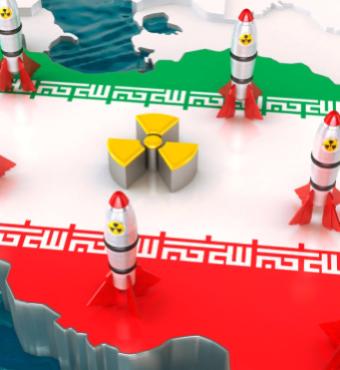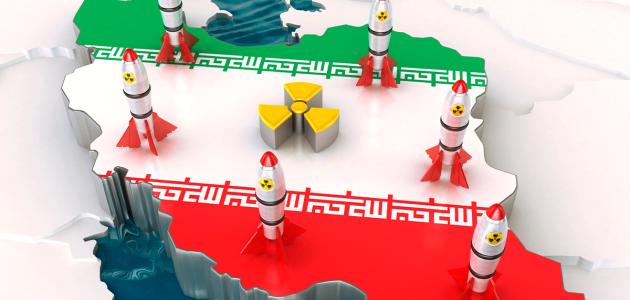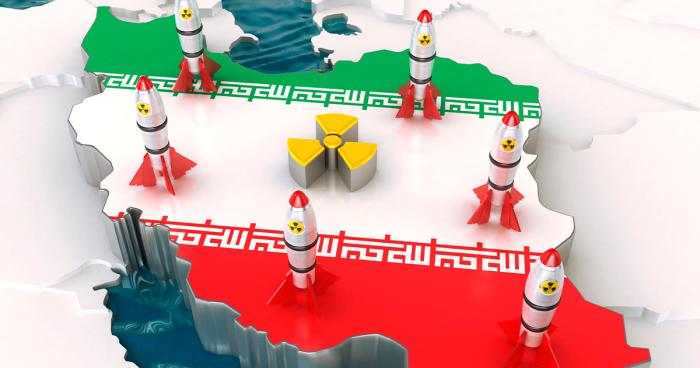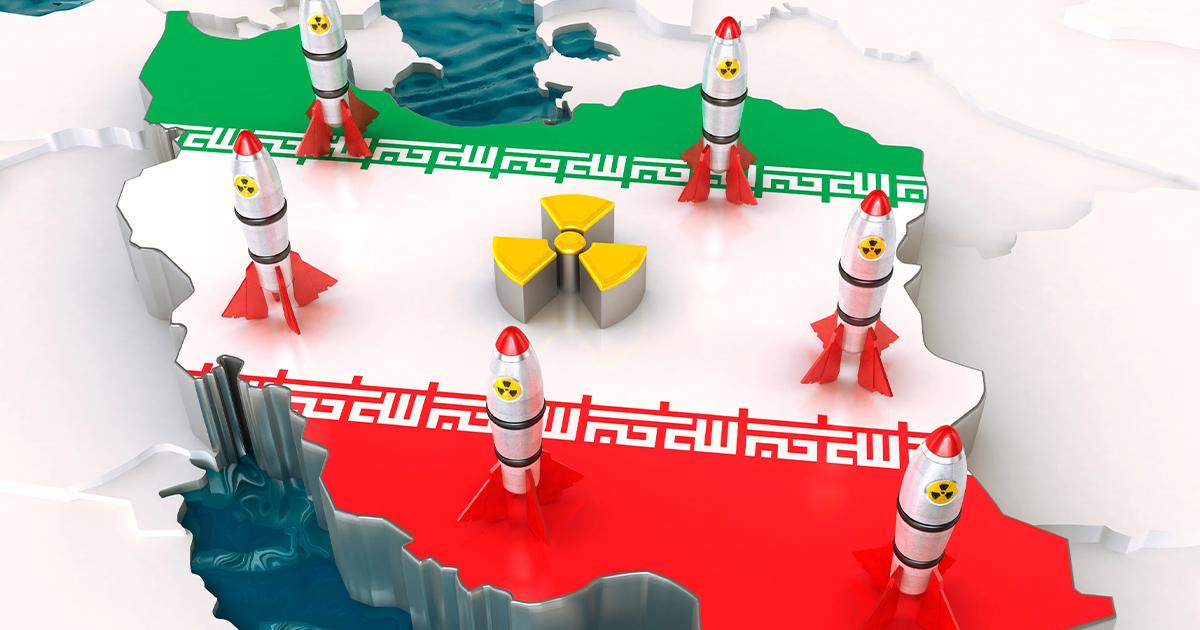- Middle East
- Determining America's Role in the World
The Biden administration’s conciliatory effort to revive the Iran nuclear deal in the last two years has all but hardened the Iranian regime’s defiance. Not only has the regime rejected the Biden administration’s offer of sanctions relief in exchange for Iran’s return to compliance to the nuclear deal, but it has also escalated Iran’s nuclear activity and increased regional destabilization, and terrorism in the Middle East and beyond. Since last summer the regime even started providing suicide drones for Russia’s war effort in Ukraine, apparently unconcerned about consequences.
The death of Mahsa Amini, a 22 year-old Kurdish woman, at the hands of Iran’s morality police on September 16, 2022 triggered lasting protests sweeping across the country. The US based Human Rights Activists News Agency estimated that by late December 2022 at least 506 protestors and bystanders, including women and children, have been killed in the regime’s crackdown. It has surprised many observers that the protests have gone on for months. Even the regime itself has come to believe the protests would continue.
Unlike the Green Movement in 2009, in which Iranians protested the rigged election, and the mass protests in 2017 and 2019, which were triggered by and focused largely on economic grievances, the regime’s repression and denial of the Iranian people’s fundamental freedom and dignity symbolized in the death of Mahsa Amini have directly galvanized the recent protests. Economic grievances only exacerbated Iranians’ hatred towards the regime. Most Iranians today have realized that the regime is unable to reform itself in any meaningful way. That is why the protestors’ demand this time has been a straightforward, whole-sale regime change, rather than any cosmetic reform to make the failed system better.
Many protestors dubbed the recent protests a “Revolution,” as if the regime was being pushed to the brink of collapse. Iranians’ desperate desire for regime change is understandable, but the regime is far from collapsing. The protestors’ heroic call for regime change on the streets amid the regime’s brutality was captured on camera and has been widely circulated on international media, yet the regime shows no sign of cracking: there has been no defections by the elites, not even from the ranks of Iranian diplomats abroad, who are considered moderate and reform-minded, let alone any top regime elites inside the country.
The reasons for the resilience of the regime are two-fold. Aside from the willingness to use all means of violence to quell dissent, other factors are at play. First, the regime’s revolutionary ideology is an effective organizing principle. Characterized by anti-Americanism, the supremacy of Shiite Islam and the theocratic rule epitomized in the compulsory hijab, the regime’s revolutionary ideology projects an international order, in which Iran occupies a central place keeping at bay the malign forces of the United States, Israel and Iran’s Sunni Arab neighbors, and a domestic order maintained by keeping any external “menace” and inherent human corruption in check. In this way the regime justifies allocating enormous resources for both foreign intervention and internal repression. This in turn benefits strata of Iranian society, whose interests and prosperity directly depend on the regime’s existence.
Secondly, the regime is adept at engaging the West, in particular the United States, to its advantage. Tehran has long been promoting the idea of Iran’s victimization at the hands of the United States, and it boasts of its righteous hostility towards the United States, Israel and other countries in the region on the behalf of “the oppressed.” Such a notion easily resonates in the willing ears of western liberal progressive elites, who emphasize western agency in all aspects of failure in Middle Eastern and Muslim countries, and who are all too eager to right the West’s alleged wrongs in Iran. In practice, it translates into the western liberal progressive policy makers’ willingness to make undue concessions to the Iranian regime. With this ideologically motivated approach, western liberal progressive policy makers essentially disregard the reality on the ground in Iran.
None of the regime’s acceleration of its nuclear program, expansion of regional destabilizing activities, exporting of terrorism or killing unarmed protestors on the streets of Iran would be a reason for these policy makers to reevaluate their overly conciliatory approach to the regime. On the contrary, many policy makers take the regime’s every menace as an indication for the West not doing enough to engage the regime. Biden’s Iran Envoy Rob Malley is a proponent of such thinking. He commented in November 2021 in the Manama Dialogue at the International Institute for Strategic Studies: “Most of the region’s disfunctionings have roots in Iran’s exclusion and its exploiting answer to that,” and a “total lifting of sanctions and their economic dividends is a sufficient incentive for Iran to get back and stick to the nuclear deal.”
Iran’s nuclear extortion works well in this context. The western liberal progressive policy makers see the possible outcome of Iran’s nuclear conundrum in a “not-this-deal-then-war” binary. For them, a hot confrontation with Iran is the ultimate sin and must be avoided at all costs. Consequently, according to these policy makers, the only approach morally permissible is to make concessions to the regime, and hopefully by doing so, the regime will come around to moderate its behavior.
Having spent four months prevaricating the Biden administration’s stance on the deal amid the anti-regime protests in Iran, Secretary of State Anthony Blinken reaffirmed in a J Street Conference in New York on December 4, 2022, that the Biden administration can support the Iranian protestors, while at the same time pursuing the revival of the nuclear deal. Many Iranians find such an idea absurd - yet another betrayal by an American administration. What the people in the street understand is that Washington’s position is fundamental to the equation.
The United States is the single most important external factor for the regime’s stability and longevity. The Biden administration’s decision to press on with nuclear negotiations with the regime is tantamount to providing the regime an assurance that the United States will not put any substantive pressure on the regime, exactly when it is facing the pressure of an unprecedented popular uprising at home.
Because no substantive external pressure is forthcoming, the regime can focus on suppressing all political alternatives. Since charismatic rivals to the regime who can amass popular support to challenge the regime are largely absent, the genuine threat to the regime would more likely come from within its ranks, that is, a regime implosion caused by elite defection. But so far, the elites, especially those controlling the armed forces and security apparatus, remain committed to the status quo, as they are convinced that their interest is best served by being loyal.
Increasing external pressure on Tehran at this critical juncture, could have been a game changer. Had the Biden administration formally announced that the nuclear deal is dead for good, it could have greatly emboldened the Iranian protestors and undermined the regime’s confidence, and therefore its stability as well. Authoritarian regimes appear invincible when they are confident, but when they doubt whether they can hold onto power, they tend to start crumbling like a self-fulfilling prophesy.
The case of Communist Romania’s collapse may be a reference point: in December 1989 Ceaușescu’s regime had seemingly no challenger, there was not even a reform movement in Romania. But in the end the regime imploded when the elites decided to sacrifice Ceaușescu in a bloody coup, so that they could remain as elites. As a result, post-Ceaușescu Romania ruled by the elites of the ancien régime remained a police state, albeit a pro-West one, for another decade.
Karim Sadjadpour of the Carnegie Endowment for International Peace argues in his seminal essay “The Source of Iranian Conduct” that the United States can expedite but not engineer a political change in Iran. During the Trump administration the United States did exactly that. After two years of the Maximum Pressure campaign, the regime was pushed to an imminent financial collapse by the time Trump left office. Regrettably, the regime was reinvigorated when the Biden administration reversed the course of Maximum Pressure to entice the regime back to the nuclear deal.
On May 8th, 2018, when Trump announced that the United States was quitting the nuclear deal, I was still held as an American hostage in Iran’s Evin Prison. I asked a fellow prisoner, who was a senior Iranian diplomat, what the regime would do. The former diplomat opined that the only sensible action the regime could take was not bow to Trump’s pressure, but strive to weather the effect of Maximum Pressure, and in the meantime step up its malign behavior in a show of strength at least until 2020. If Trump would be reelected in 2020, then the regime would have to find a way to compromise with Trump, for it just does not have the capacity to resist consistent US pressure in the long run. But if a Democrat would take over, the former diplomat reckoned, then the United States might try engagement again, and the regime would turn its resistance during the Trump years into leverage. Today we can only imagine the counterfactual about what would have happened to the regime, had Trump had the second term, or had Biden continued his predecessor’s Maximum Pressure.
What should the United States do now? The short answer is re-apply crushing pressure on the regime and at the same time reaffirm credible deterrence, but with one caveat – the Maximum Pressure campaign was intended to corner the regime into a cul-de-sac. When Biden jettisoned it, the policy was still in an early stage, and the Iranian regime elites had not been forced to contemplate how they might survive without the regime. Should the Maximum Pressure or a variation of it be implemented again, it would be critical for U.S. policy makers to devise a more nuanced strategy to encourage regime elites to defect.
We have learned a great deal about the land of the Ayatollahs. We know good strategies that can constrain the regime or help induce positive change in Iran. Realistically, however, the Biden administration will not be able to implement any sensible strategy until it disentangles itself from an ideologically motivated approach to Iran. In the next two years, with or without a nuclear deal, we will likely see an Iranian regime that has completely lost legitimacy struggling to manage its day-to-day existence.
Wang Xiyue is a Ph.D. Candidate in History at Princeton University. He was held by the Government of Iran as an American hostage between August 2016 through December 2019.







